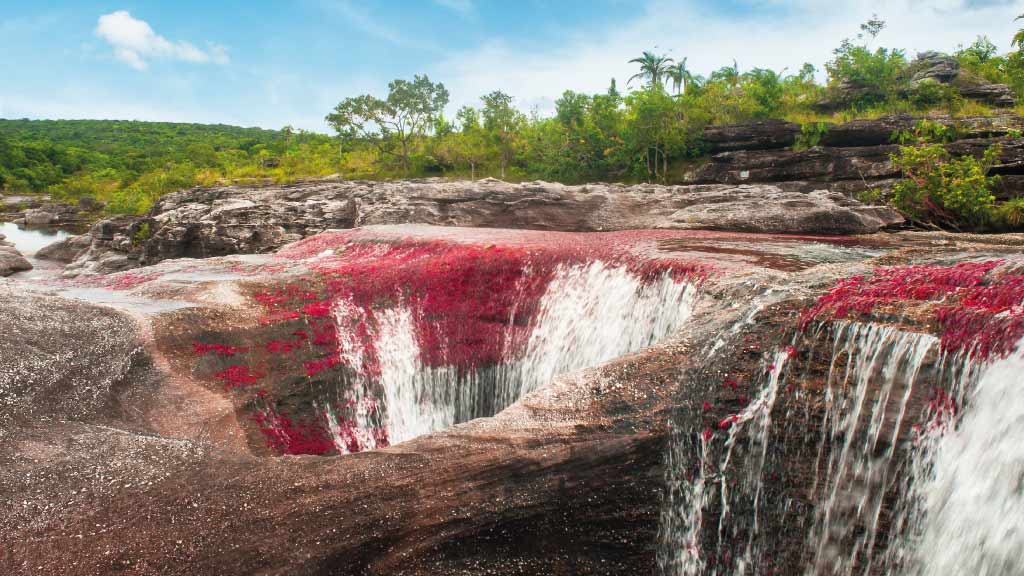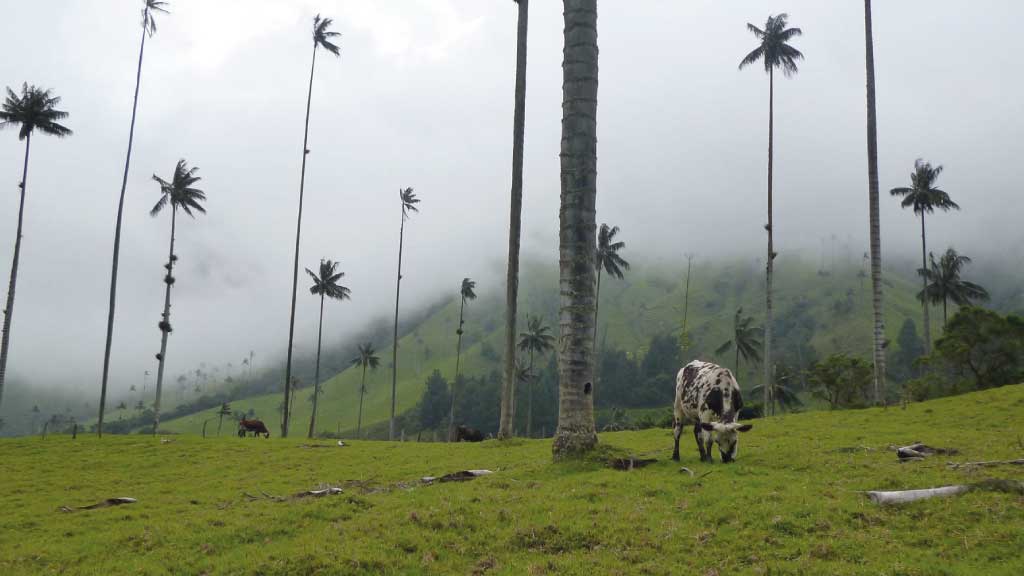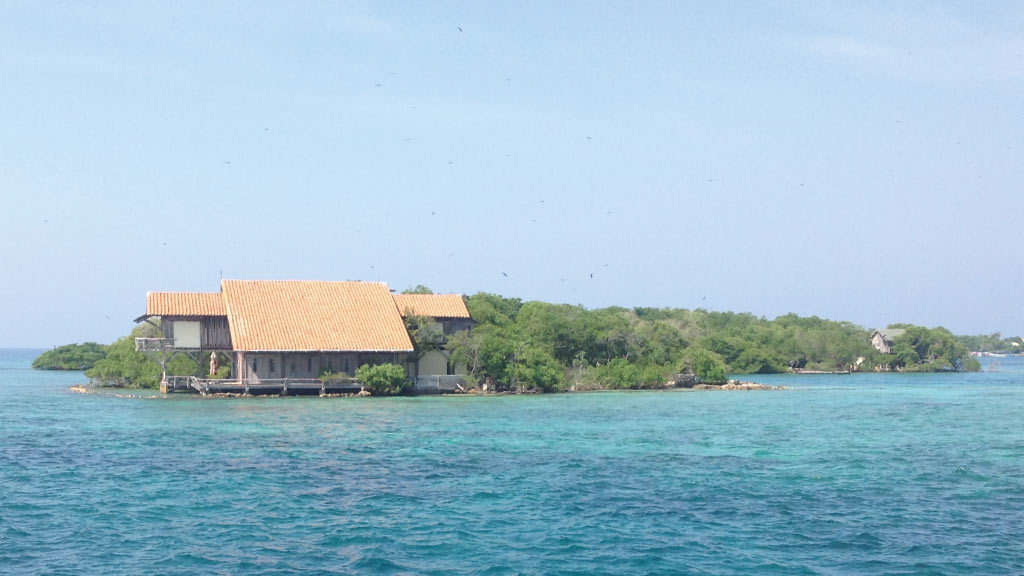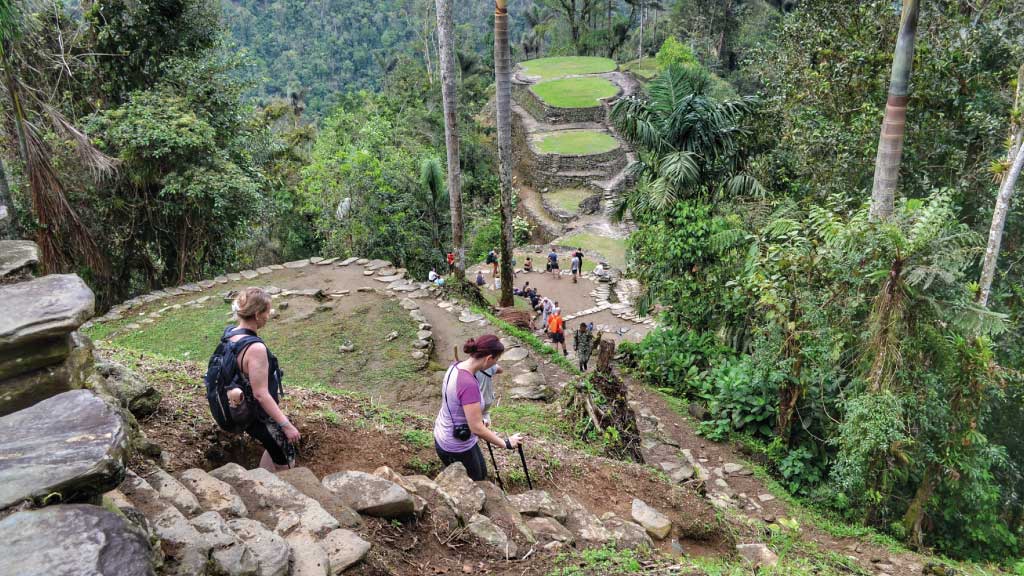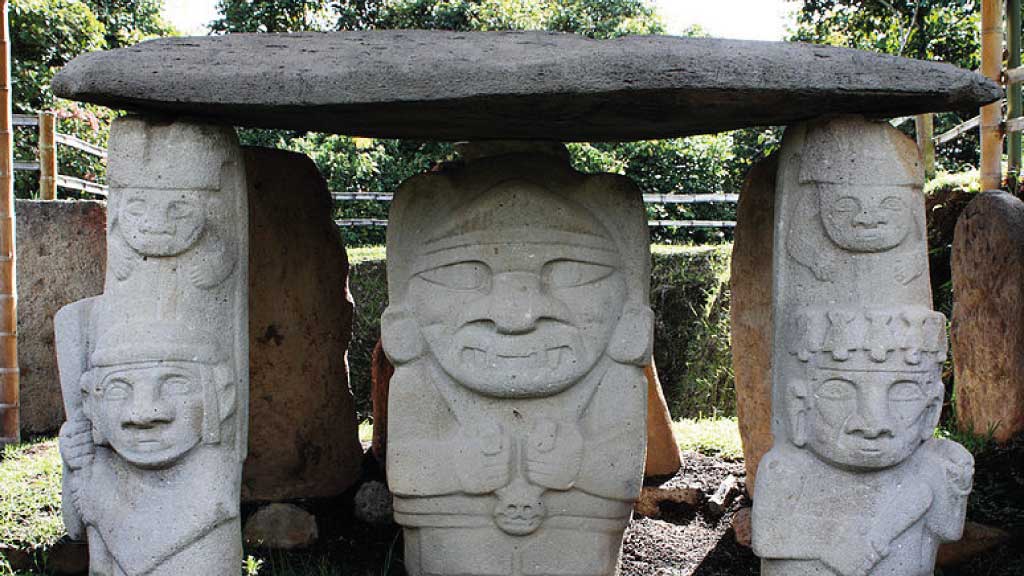Best Places to Visit in Colombia
Colombia is the hidden gem of South America. No longer under the radar, over the last decade, Colombia has become a go-to tourist destination for its culture, natural beauty, and the warmth of its people.
Quite rightly Colombia has been winning prestigious accolades and gaining deserved attention in the tourist world. If a vacation to Colombia is not yet on your travel bucket list, perhaps now is the time to reconsider.
Keep reading for our top 16 BEST Places to Visit in Colombia. From colonial cities to pristine beaches and charming coffee pueblos, Colombia delivers in style.
SECURE YOUR COLOMBIA TRAVEL
Get a FREE personalised quote todayWhere to Visit in Colombia?
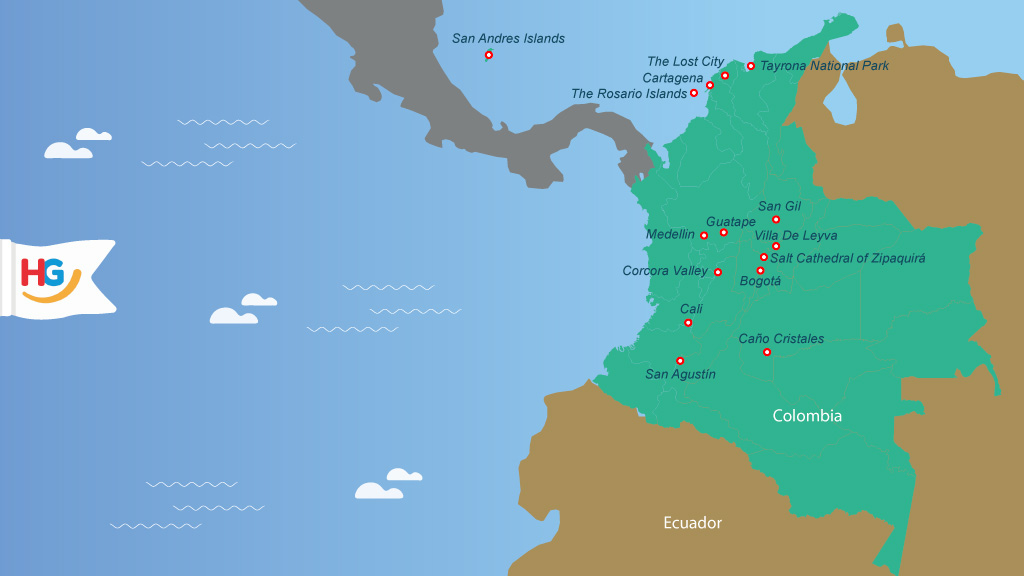
To keep things simple, we’ve divided our top 16 places to visit in Colombia into categories of interest. Use the following links to jump into each section.
Best Cities to Visit in Colombia
1. Medellin - My #1 Favorite Place in Colombia
Once famous for all the wrong reasons, Medellin City is now right at the top of my go-to list as the BEST place to visit in Colombia.
What makes Medellin City so special? Let’s find out …
Medellin boasts enviable nightlife and live music, as well as fabulous local cuisine in the restaurants of El Poblado and Los Laureles neighborhoods. Some of the best Colombian coffee is also served in barista cafes here.
Not only is Medellín a very innovative urban space to explore, but it’s also green wherever you look. Pleasant mountain scenery surrounds the city, while urban parks are never far away.
The people of Medellin, known as Paisas, are famously friendly, warm, and welcoming folk. It’s a great place to speak to random strangers, make new friends, and share new experiences.
The Medellin climate is as close to perfect as any world city I’ve visited. With average temperatures of 22°C (72°F), and daily highs over 30°C (86°F), it’s easy to see why Medellin is known as the ‘City of Eternal Spring’.
Medellin also has lots of cultural attractions to indulge in. I love the Museo de Antioquia’s exhibit dedicated to Colombian artist Fernando Botero and his wonderful statues that adorn the plaza. I can also recommend a visit to Casa De La Memoria to learn the truth about Medellin’s murky past under the grip of Pablo Escobar.
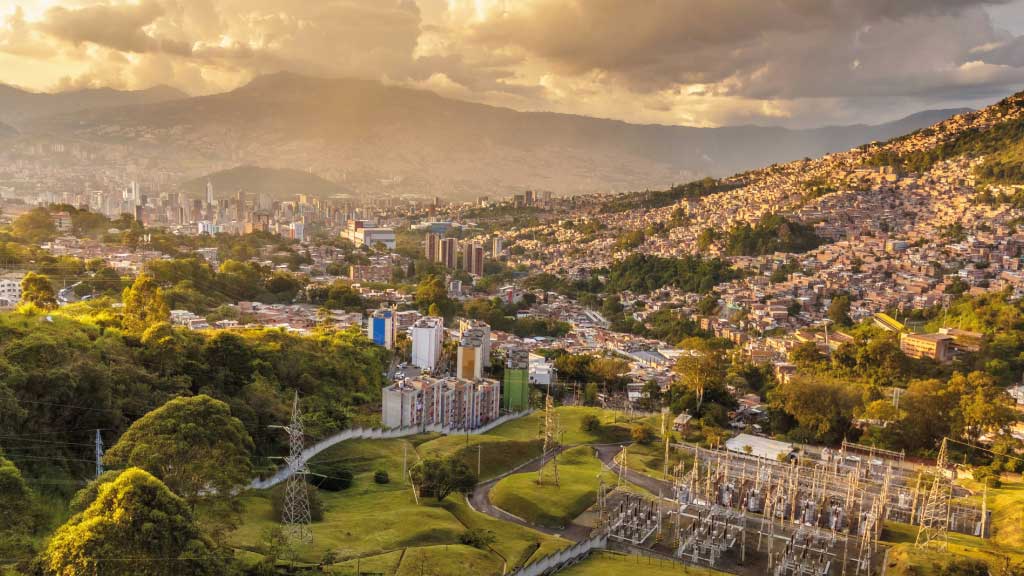
2. Cali – Colombia’s Capital of Salsa Music
If you enjoy Salsa music then the city of Cali to the south of Colombia should be on your wish list.
Cali Colombia is the world capital of Salsa Dancing, so not surprisingly the nights pulsate with irrepressible Latin beats.
Don’t know how to dance? No worries, most salsa clubs (salsatecas) offer group classes to learn the basics, or to polish up your existing moves. The locals are also more than happy to help you practice during the small hours.
There’s also great live music to be found in Cali. It’s pretty amazing to sit back and watch a live salsa band, while professional local dancers put on a mesmerizing performance on the floor.
It’s not just about Salsa, visitors can also try their hand at other popular Latin dance moves like Cumbia, Merengue, and Bachata.

3. Cartagena – UNESCO World Heritage Grandeur
The Caribbean port city of Cartagena is famous for its walled, colonial-style city streets, and fortifications. It’s little wonder that Cartagena has received UNESCO World Heritage recognition.
The coast of Colombia almost feels like a different country to the Sierra cities of Bogota and Medellin. The sizzling-hot weather brings with it a slower pace of life and a relaxed vibe that visitors can easily drift into.
I recommend taking a random stroll of the cobbled streets within the walled old town. At every turn, a new picture postcard scene emerges of colorful colonial buildings, plazas, and churches. Romantics can explore the streets on a horse-drawn carriage, or enjoy fine al-fresco dining while people-watching on the square.
Cartagena also boasts several stunning, pristine white-sand beaches to kick back after a day of exploring.
A great way to discover the highlights of Cartagena city is on a private Happy Gringo 8-day Colombia Caribbean Coast Tour. You’ll also get to explore Santa Marta and Tayrona National Park further along this spectacular coast.
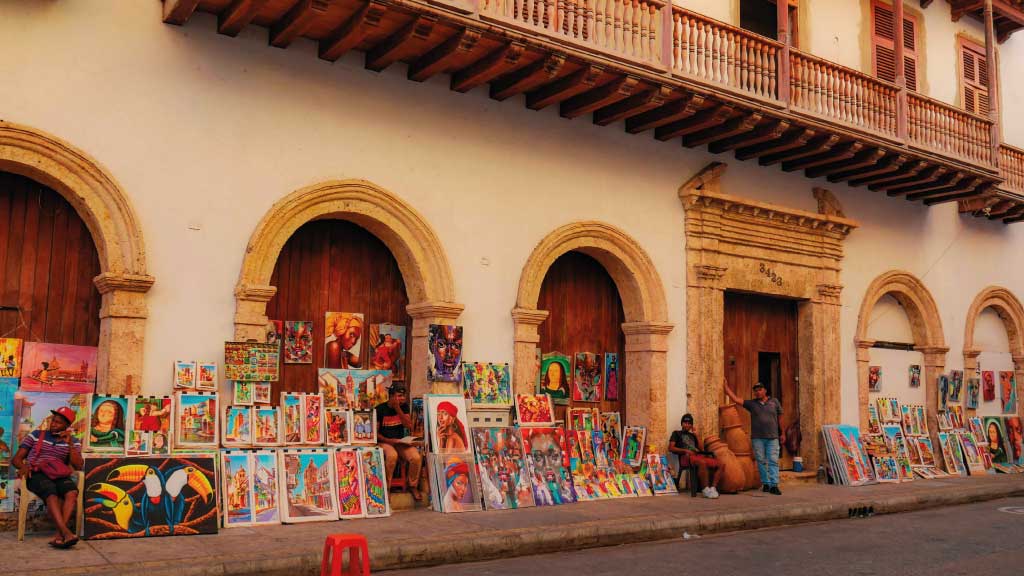
4. Bogota – The Very Heart of Colombia
No vacation to Colombia would be complete without spending some time in the capital city Bogota.
Home to almost 12 million people, Bogota is a bustling metropolis that never seems to rest.
Most tourists head to explore the historic buildings and plazas of the old town of Bogota on foot. In the same area, the Gold Museum is not to be missed.
For a change of pace, head to La Candelaria district, a maze of narrow streets and parks. The bohemian-style bars and cafes are perfect to wile away a few hours. Also, check out local listings for live music or shows here.
For the best cityscape views, and to escape the heat on a sunny day, citizens head up the cable car to the top of Monserrate Hill. Take a picnic with you to enjoy the grassy slopes while taking in panoramic views of the city.
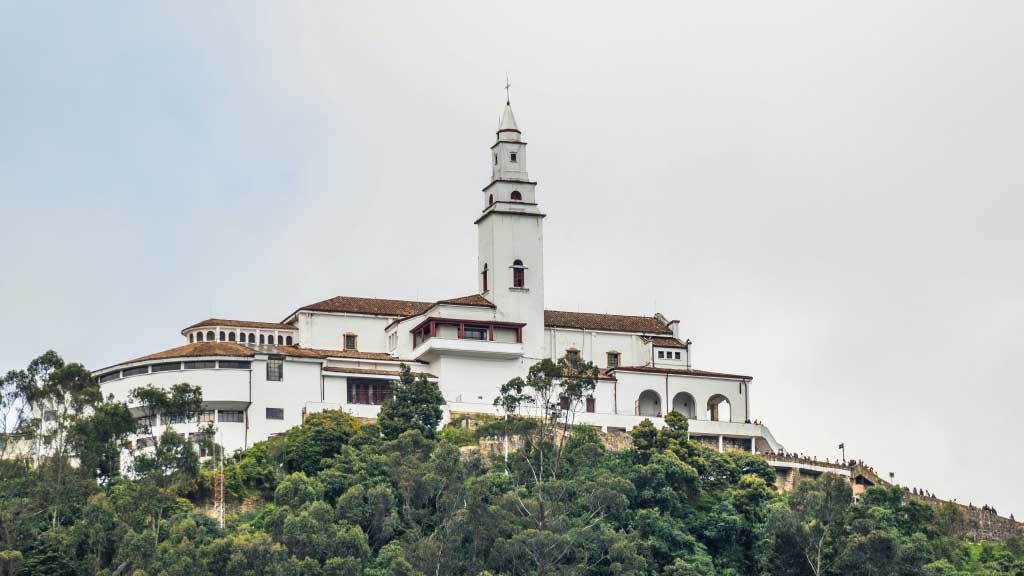
Best Places to Visit in Colombia for Nature Lovers
5. Zona Cafetera – Colombia’s famous Coffee Triangle
Colombia is famous for producing some of the world’s best coffee. So, next on our list of BEST places to visit in Colombia has to be the Zona Cafetera.
Coffee first arrived to Colombia with Jesuit priests back in the 17th century and was quickly adopted by small farms, known locally as Finca’s.
To explore Colombia’s Coffee Triangle, we recommend basing yourself in one of the areas charming towns such as Salento. While this enchanting town is both colorful and welcoming in itself, the real treat is up in the surrounding green hills. It’s easy to explore nearby fincas to see row upon row of lush coffee plants and learn about the process of harvesting and roasting beans.
Of course, no coffee tour would be complete without tastings. You might just be surprised by the fine taste and subtle differences in flavor at each finca.
Happy Gringo operates a popular tour to experience the Zona Cafetera. Our 8-day Colombia Coffee Region Tour includes Medellin, many of the best small coffee towns and fincas, plus a visit to nearby Corcora Valley (see #7 of our best places to visit in Colombia).
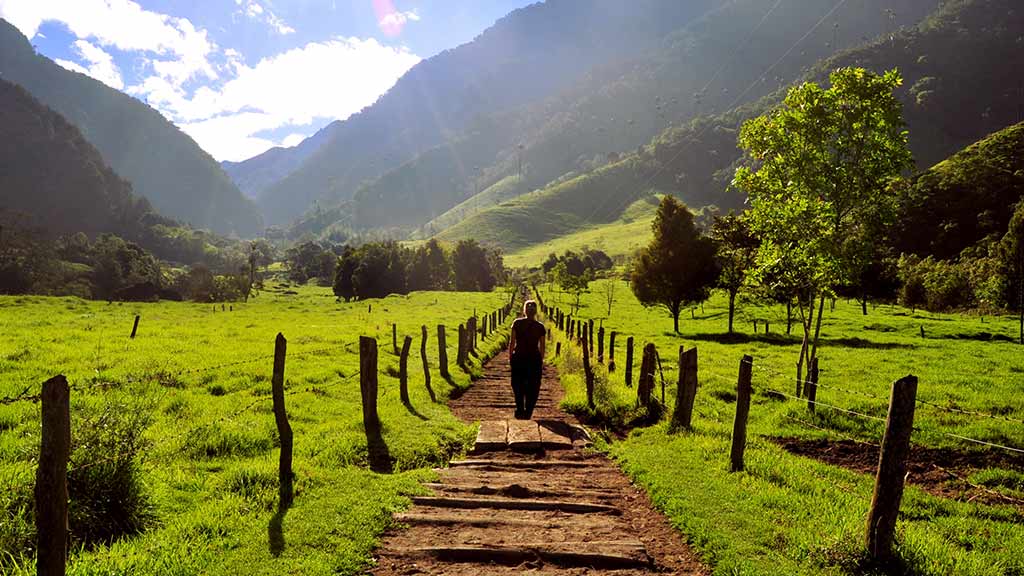
6. Caño Cristales, Vista Hermosa – Colombia’s River of 5 Colours
One of the most amazing natural wonders in Colombia is the Caño Cristales River.
For just a few special weeks of the year, Caño Cristales transforms into the famous River of 5 Colors. A unique combination of algae, quartz, mosses, and plants convert a normal river bed into magical hues of yellow, green, blue, black, and red.
This natural phenomenon draws tourists from across the country to visit this remote area. A local guide and special permit are required to visit the river, so advance preparation is a must. Also, the magic only occurs between the months of July and November, so plan accordingly.
Access to Caño Cristales is via the small town of La Macarena, with direct flights in season to/from Bogota. An unforgettable guided tour typically takes you to discover the colorful river, waterfalls, rapids, and nearby swimming holes.
7. Corcora Valley – THE Place to see Colombia’s Huge Wax Palms
We often get asked where to go in Colombia to see the famous tall palm trees. The answer is close to Salento (see #5 best place to visit in Colombia). The area is known as the Corcora Valley and is easily included in a trip to the Zona Cafetera.
The incredible wax palms at Corcora are not only the tallest palm species on the planet but have also been named Colombia’s national tree.
The best way to experience the Corcora Valley is to hit the trails. The lush mountain landscapes can be explored on foot or on horseback, and there are waterfalls and rivers to discover along with the giant palms.
Best Places to Visit in Colombia for History & Culture
8. Villa De Leyva – Step Back into Colombia’s Colonial Past
Most visitors to Colombia have already heard about Villa de Leyva. Its fame as one of Colombia’s most beautifully preserved colonial towns precedes it.
A visit to Villa de Leyva is a step back into Colombia’s Spanish colonial era, with dreamy cobblestone streets and white-washed facades. It also boasts the largest Spanish Square in the country, the 150,000 square-foot Plaza Mayor.
The town is perfect for taking relaxing strolls or people-watching in the quaint plazas. It’s also home to a popular gastronomic scene, where cafes and restaurants serve the latest gourmet cuisine in old buildings soaked in history.
Located just 100 miles (160km) from Bogota, the journey to Villa de Leyva takes around 3 & 1/2 hours by car or bus. For those heading onwards to San Gil (#16 in our list), Villa de Leyva is an attractive spot to stopover for a couple of nights en route.
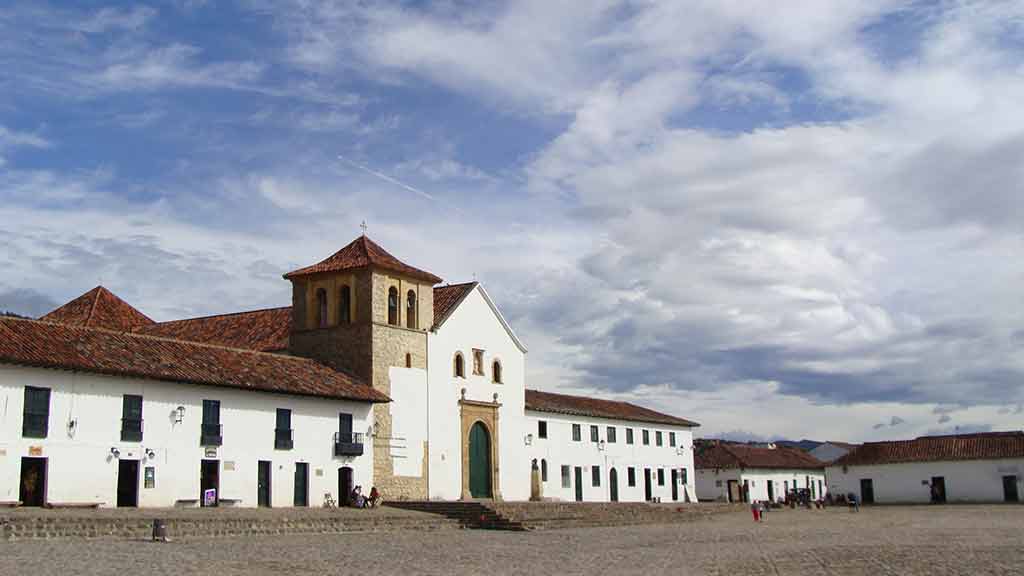
9. Guatape – Colombia’s most colorful town
Photographers will love the tiny pueblo of Guatupe, regarded by locals as the most colorful town in all of Colombia.
Guatape’s narrow cobbled streets and overhanging balconies are straight out of a fairytale. Charming houses sport attractively painted bright hues of red, blue, green, yellow, and orange. Look closer at the house walls to discover carefully painted murals depicting local life and history. If you were hoping for a quintessential Colombian pueblo, then surely Guatape is it.
Most tourists also combine a visit to Guatape with a nearby attraction, Piedra de Peñol. Just 10 minutes drive away from town, La Piedra is one of the largest free-standing rocks (monoliths) on the planet. The 702 steps up to the peak may be exhausting, but the panoramic views from up on high more than compensate.
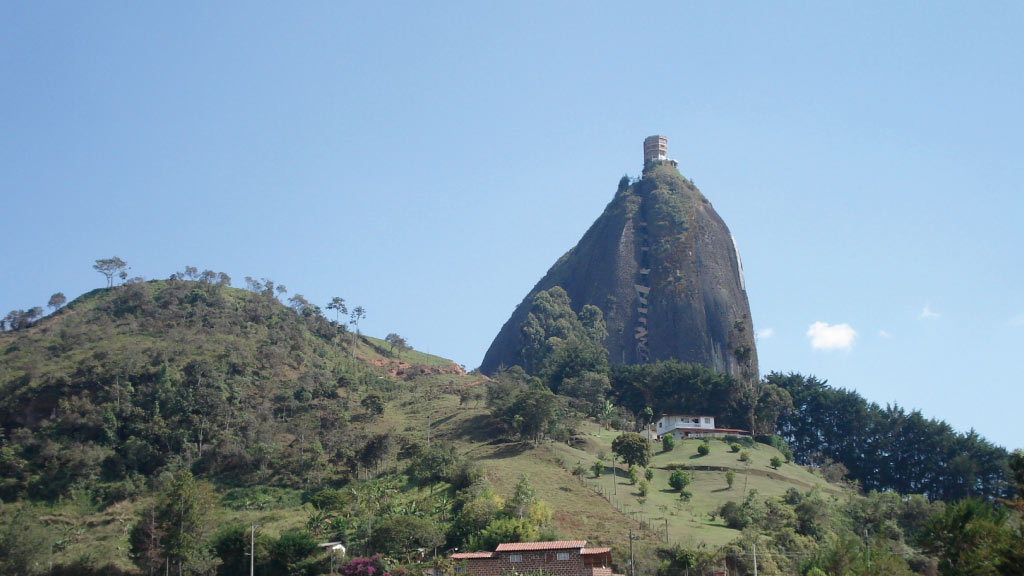
GET FREE ADVICE
From a Colombia destination expert todayBest Beaches to Visit in Colombia
10. San Andres Islands – Scuba Diving & White Sands
Off of Colombia’s Caribbean coast lie the famous San Andres Islands, popular with locals and foreigners alike.
San Andres Colombia is best known for scuba diving. This year-round destination has 30+ different dive sites and is part of a UNESCO-recognized Biosphere Reserve. The soft and hard coral reefs are home to schools of parrot fish, pufferfish, barracuda, wrasse, and grouper, among other species. With luck, you might also come face to face with stingrays, sea turtles, and nurse sharks!
For non-divers, the stunning stretches of pristine coral sand beaches, and crystalline waters are a paradise. The convenient San Andres ring road gives easy access to both popular tourist beaches, as well as some deserted hidden gems.
The flight time from Bogota to San Andres is a little over 2 hours. The route is operated by local Colombian airlines, including low-cost options.
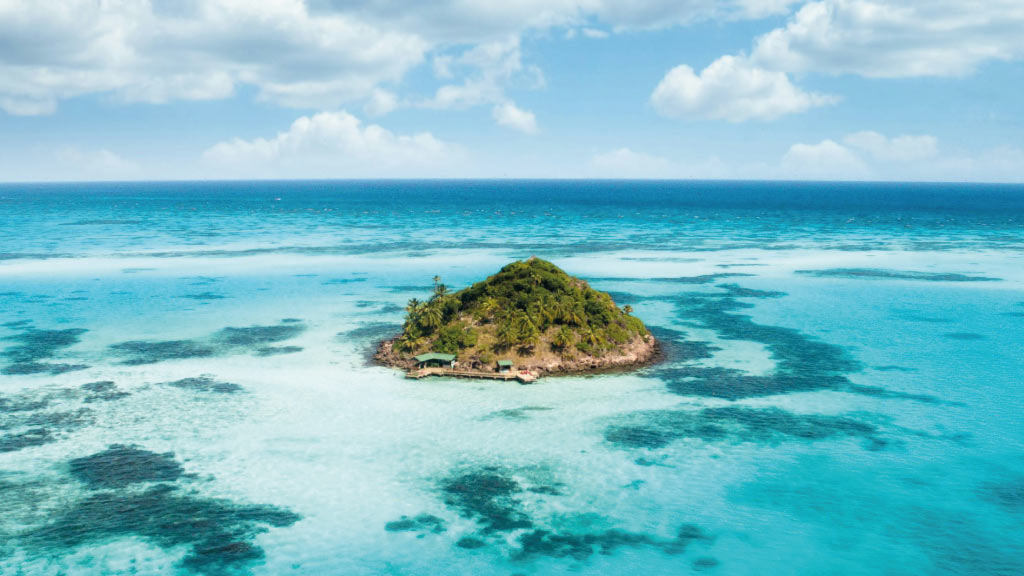
11. Tayrona National Park – Best for Pristine Beaches and Jungle
Another of my personal favorite places to visit in Colombia is Tayrona National Park. Way back in 2002 I first trekked into Tayrona via a muddy jungle trail, finally emerging to a stunning beach where hammocks were the only overnight option. It was quite an adventure.
For me, there’s something magical about lush jungles and mountains meeting beautiful sandy beaches. It almost feels like a scene from a castaway movie.
Along the coast, there are a string of stunning, deserted beaches to explore on foot. These jungle paths are home to noisy howler monkeys, exotic birds, and much more, so keep your eyes peeled for an unexpected wildlife encounter.
If hammocks are not your thing, today Tayrona even has luxury glamping huts for a more glamorous stay.
The national park is accessed from Santa Marta city, with airport access on Colombia’s northern coast.
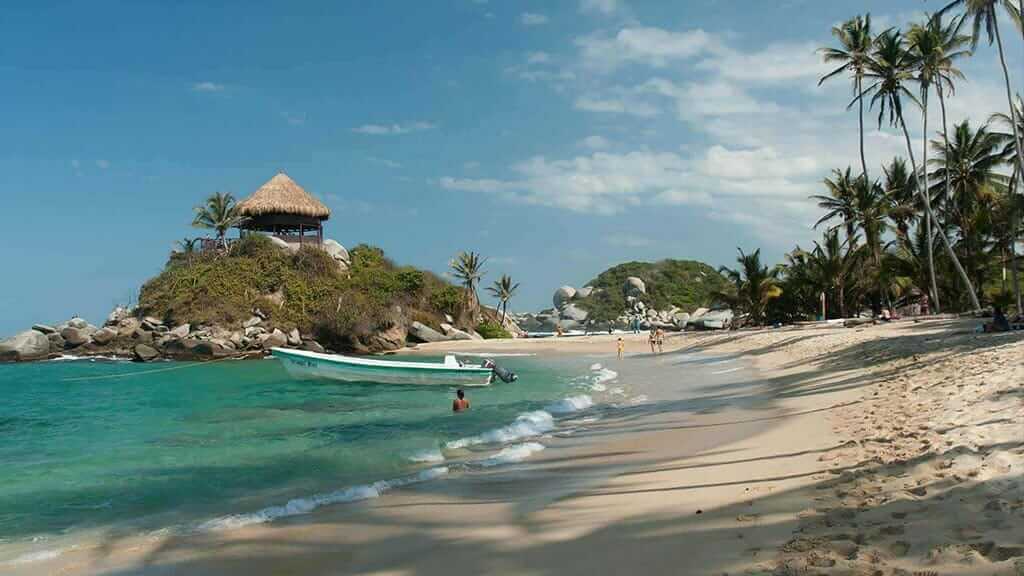
12. The Rosario Islands – Desert Island Paradise
Last in our list of best Colombian Beaches we have the Rosario Islands.
Located off the coast of Cartagena (#3 best place to visit in Colombia), Rosario is an archipelago of 30+ islands and one of Colombia’s many protected national parks.
Day trips from Cartagena take tourists out to visit the best Rosario Islands beaches, with BBQ lunch included. For an overnight stay better head to Isla Grande, where resorts, hotels, and restaurants cater best to visitor needs.
Snorkelers and divers will also enjoy the underwater life in the protected Rosario Island waters.
Best Off-The-Beaten-Path Places to Visit in Colombia
13. The Lost City (La Ciudad Perdida) – The Best Trekking Trail in Colombia
Hiking enthusiasts should look no further than the Lost City Trek in Colombia’s Sierra Nevada Mountain region.
The name “Lost City” conjures up images of an Indiana Jones adventure, and in truth this hike lives up to the reputation.
The strenuous 4-day jungle trek requires both stamina and motivation. You’ll also need entrance permits and an indigenous guide, so this is not a trek for going solo.
Successful hikers are rewarded with the discovery of Colombia’s Ciudad Perdida, an ancient archaeological site occupied by the Tayrona people from around 800 AD.
Although only a small portion of the ruins have been uncovered and cleaned up for tourists to explore, the experience is unique and unforgettable.
The Lost City is our top recommendation for off-the-beaten-path places to visit in Colombia.
14. San Agustín – Best Place in Colombia for Archaeology
Another off-the-beaten-path Colombia destination to consider is the town of San Agustin and its remarkable Archaeological Park.
Fascinating ancient statues and rock carvings are dotted around the lush green park, with picturesque views of the Andes mountains to all sides.
The creative artifacts date back to a period from the 1st to the 8th century. In truth, little is known about why the statues were built, or what their purpose may have been, although some of them do guard ancient tombs. Equally, the people and civilization who created them remain largely a mystery. But, if anything, this adds to the overall mystique of the place.
Other activities to enjoy while staying at San Agustin Colombia include horse-riding into the surrounding hills, waterfall hiking, and visits to local sugar cane workshops.
15. Salt Cathedral of Zipaquirá – The Quirkiest Tour in Colombia
As underground attractions go, the Salt Cathedral of Zipaquirá is pretty unique.
Located just 32 miles north of the capital city Bogota, the Salt Cathedral of Zipaquirá is a stunning complex of chapels carved out of an unused, underground salt mine.
Visitors head down 250 ft underground to explore this architectural masterpiece, carved by the very hands of the miners who used to work here. The chapels include works created by 127 of Colombia’s artists and sculptors.
Remarkably, the chapels and cathedral are still in use. So, tourists can attend the quirkiest Sunday mass of their lives, or even get married here. Imagine that, inside the largest deposit of rock salt in the world.
A guided tour of the Salt Cathedral of Zipaquirá lasts 1 hour. It’s also possible to visit the old mining tunnels, sample fine Colombian coffee underground, or make use of Colombia’s tallest climbing wall.
Zipaquirá is also famous as home to Nobel Prize-winning author Gabriel García Márquez who lived here when he first started his life as a writer. His most well-known book, “A Hundred Years of Solitude”, has been translated into many foreign languages and is popular across the globe.
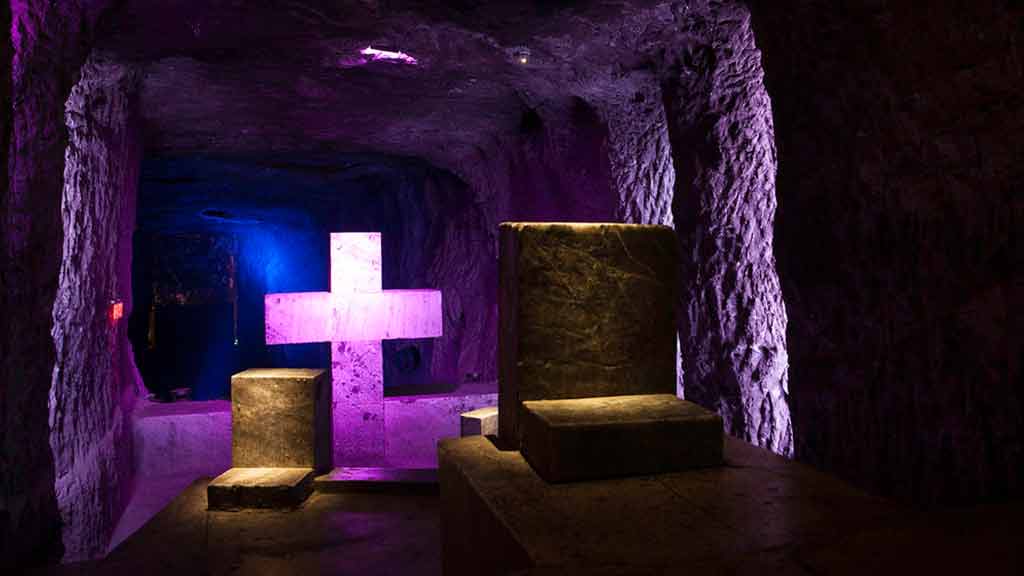
Photo taken from: Jimmy Baikovicius
Best Colombian Destination for Adventure Activities
16. San Gil, Santander – The Adventure Capital of Colombia
Last but not least on our list of Best Places to Visit in Colombia comes San Gil, the perfect base from which to enjoy an array of outdoor adventure activities.
Despite its small size, the town of San Gil packs a big punch. The nearby canyons and rivers in Chicamocha National Park are a playground for adrenaline junkies.
For hard-core adventurers, activities include white-water rafting, rock climbing, trekking, mountain biking, paragliding, caving, rappelling, and spelunking.
Gentler San Gil excursions are also possible, such as the walking trails at Parque El Gallineral, or a trip out of town to Pozo Azul swimming hole and waterfalls.
Best Places to Visit in Colombia: FAQs
So, having covered our list of the 16 best places to visit in Colombia, let’s finish up with a quick-fire FAQ related to travel in Colombia.
Where is Colombia?
Colombia is located to the far north west of South America.
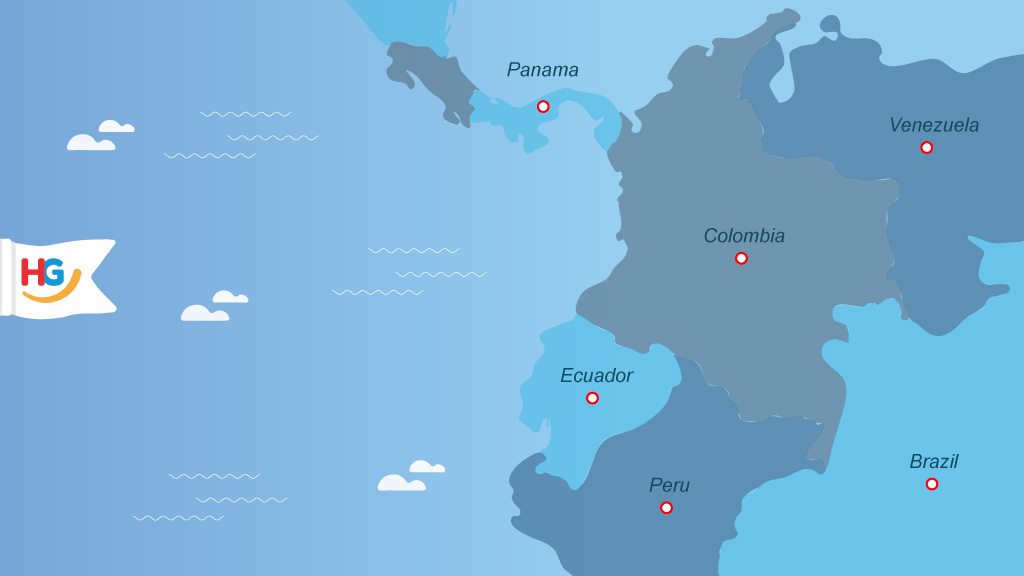
The country is bordered by Panama to the north, Ecuador and Peru to the south, and Brazil and Venezuela to the east.
Colombia has both Pacific and Caribbean coastlines.
How to Get to Colombia?
There are direct international flights into the capital city of Bogota from major North American airports including Miami, Orlando, Fort Lauderdale, New York, Washington, Houston, Atlanta, and Toronto. There are also some direct flight routes from North America into Cartagena city.
From Europe, there are direct flights between Bogota and Madrid, Barcelona, London, Paris, and Frankfurt.
It’s also easy to enter Colombia by crossing over land borders from other South American countries.

Is Colombia Worth Visiting?
For an authentic tourist experience in a diverse country, Colombia ticks all of the right boxes.
Having personally visited different regions of Colombia multiple times since 2002, I do not hesitate to recommend Colombia as a country well worth spending some time in.

What is the #1 Tourist Attraction in Colombia?
Unlike neighbors Ecuador, Peru, and Brazil, it’s hard to pick just one top highlight destination for the country of Colombia.
I believe it is in fact Colombia’s rich diversity that makes it such an attractive tourist destination. There is no one must-see place, instead, you can pick and mix your own highlights.
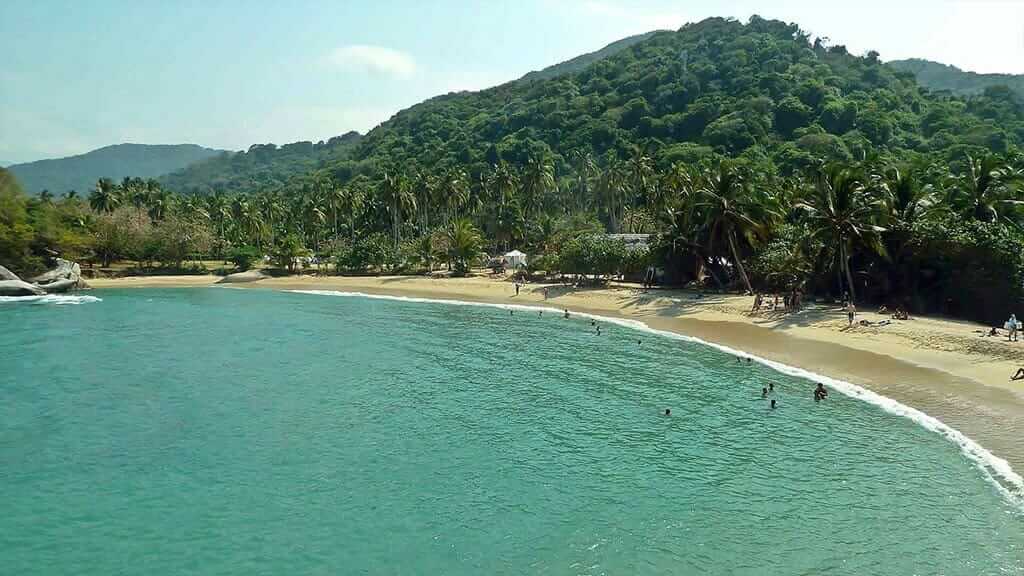
When is the Best Time of Year to Visit Colombia?
There is no simple answer as each region of Colombia experiences different weather.
I prefer to view Colombia as a year-round travel destination. There are no extreme weather patterns or defined climatic seasons to avoid. Most months enjoy both sunshine and rain, with mostly comfortable temperatures.
Some experts recommend December to March as optimal months for Colombia travel for the lowest rainfall.
Another consideration might be to avoid the crowds over peak Colombia travel seasons of Spring Break / Easter, Summer vacations (July and August), and the Christmas & New Year period.
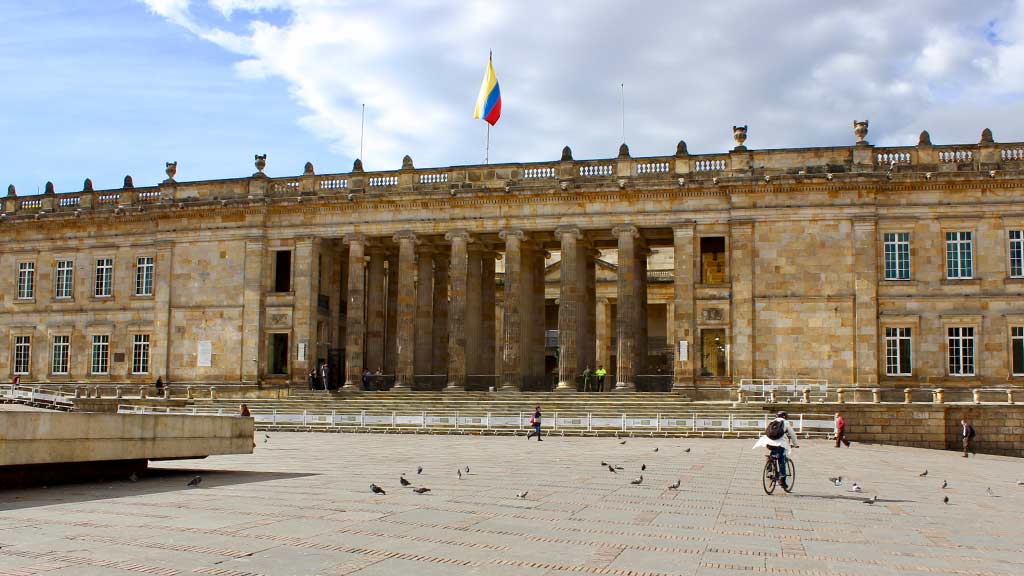
Is Colombia Safe to Visit?
Colombia may have shrugged off its reputation for international crime, but even today there are people who continue to associate the country with violent crime.
In truth, Colombia cities today boast lower crime rates than many US and European cities. But, as in any region of the world, there will be isolated cases of petty and occasionally violent crime.
For travel anywhere in the world it’s best to be street-wise, do your research about safe areas for tourists to explore, and always use your own common sense.
The vast majority of trips to Colombia are trouble-free and full of happy memories.
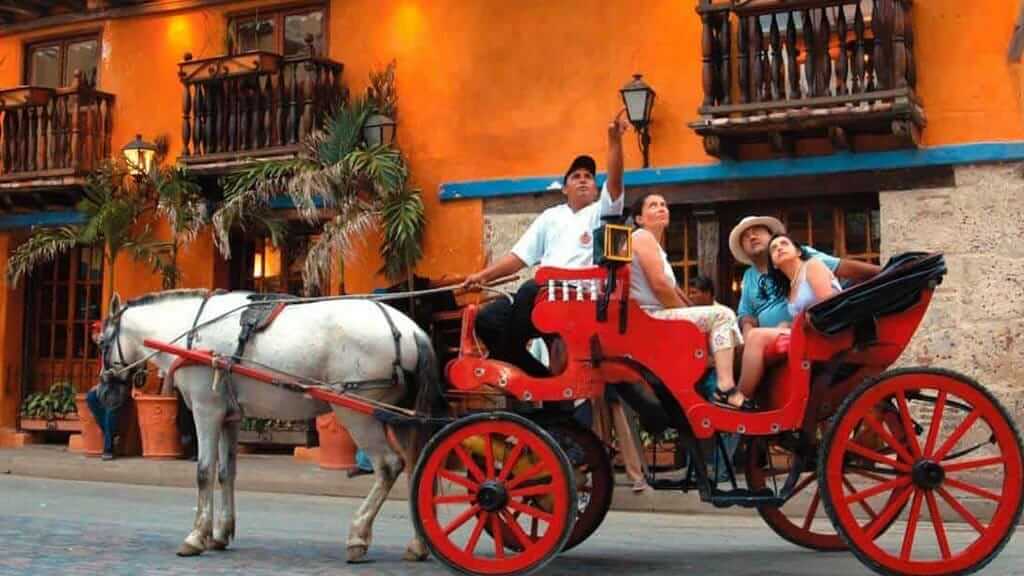
For more information about discovering the historic, cultural, and natural wonders of Colombia, contact a member of the Happy Gringo team.
Check out our 15-day Magic of Colombia tour which covers many of the destination highlights in this blog, or let us custom-make your own unique Colombia vacation itinerary.
Book With The #1 Trusted
SOUTH AMERICA Travel Agency
In conclusion, for tourists willing to venture a little off of the beaten path, the country of Colombia offers many rewards.
As our list of the 16 Best Places to Visit in Colombia demonstrates, there is no shortage of amazing tourist destinations & natural wonders that await.
If Colombia is not yet on your travel bucket list, perhaps now is the time to reconsider.



